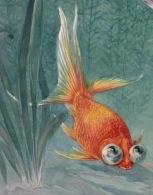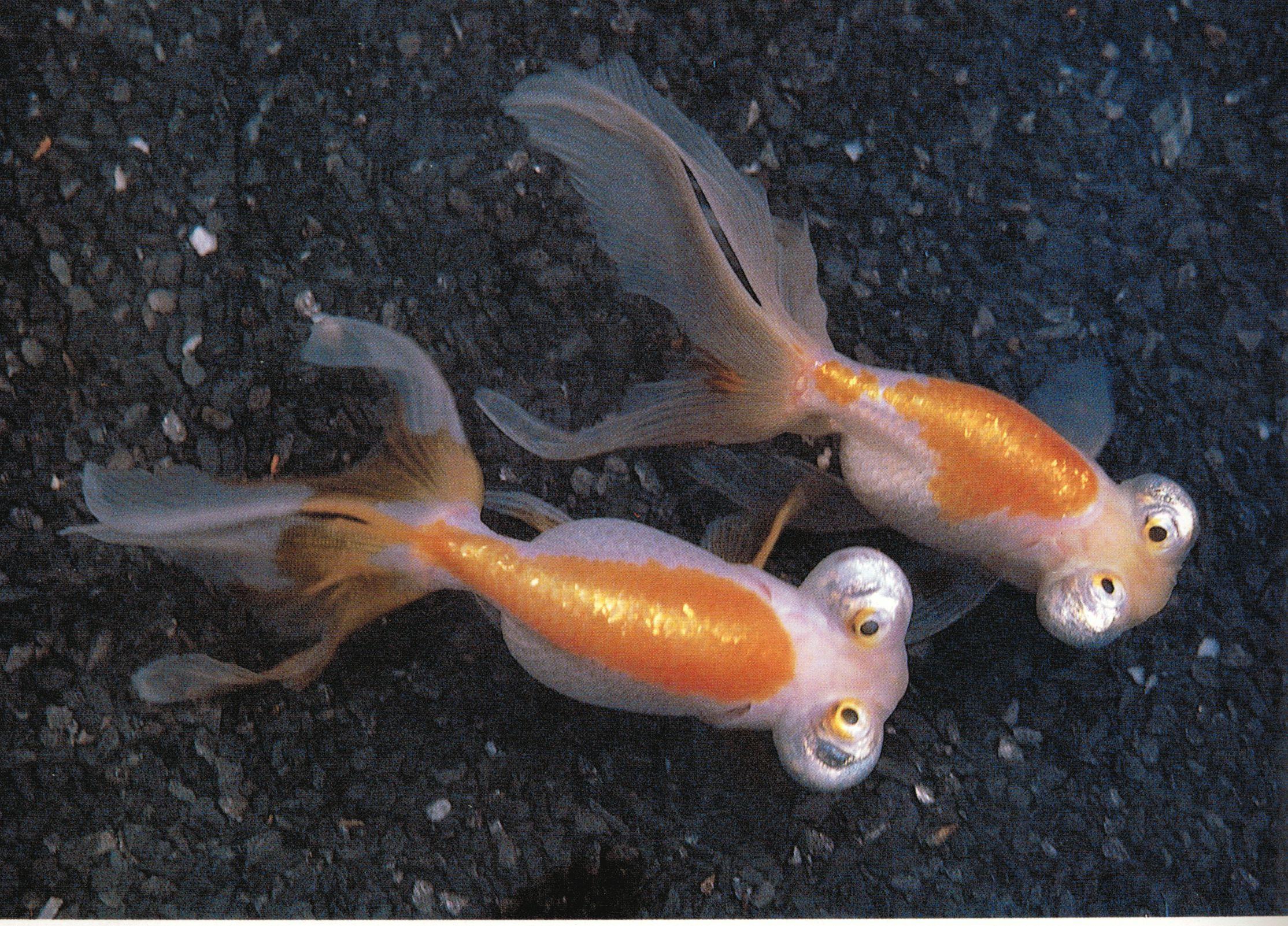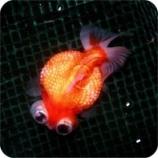Goldfish Selecting and Rearing - Celestials page 1 / 6
I secured my foundation stock in the late 1970s from two West Coast importers. I introduced additional stock from a Florida source in the mid-1980s. All fish were of Chinese origin. Living in a city apartment as I do and the space limitations that dictates, I do not breed every season—usually every other year or so. For the same reason, and because there is so little interest for traditional Celestials in the ‘serious’ goldfish community, I cull ruthlessly and early leaving just what I need to continue the line. Though I have many of my own snapshots scattered among the following photos, I’ve never taken as many photos as I wish I now had--people weren’t exactly beating down my door to see and share pictures of Celestials--nor am I any good at it, so I do not have photos of my own fish to illustrate every culling point. However, there are plenty of photos of cull-quality celestials around, which I’ll add to my own to illustrate those points when we get to them. Unlike my colleagues who have commented on culling practices for other varieties, I feel it might be necessary for me first to describe and depict exactly what fish I am working with, since there are at least four forms of Celestial Eye goldfish being produced these days:
Form #1: The classic or traditional Celestial--the fish I’ve been keeping and breeding since the late 1970s. This ‘original’ form is virtually unchanged since the days of Wolf and Innes in the early 1900s. These fish ideally possess elongated egg-shaped bodies (body depth of 1/3 to ½ of the body length) and long caudals. This is the Celestial described in both the GFSA and AGA standards. Examples of this traditional form continue to be seen from time to time in pet shops, though they are generally of very poor quality. Here are five images depicting the traditional form over a span of nearly 90 years. The color drawing of a red Celestial dates from 1924. The fish that ‘sat’ for the portrait was provided by William T. Innes. The black and white photo, also by Innes, depicts two young fish owned (and most likely bred) by Franklin Barrett in 1935—yes, the same Franklin Barrett of Philly Veil fame:


The next photo, a three year old pair--silver and red male with red female--dates from 1954 and, in my opinion, still ranks as one of the best pairs I’ve ever seen. Though of English origin, what with their long caudals and elongated egg-shaped bodies, they better conform to the current American standard than the current British standard. It is these two fish that I have in my mind’s eye when I plan a breeding and while I’m culling:

And a near-mature pair of Chinese Celestials from 1990:

And finally, to the present day: April 2012, a picture of a very welcome surprise that, after all these years, cropped up for the first time in my most recent batch of youngsters—a yellow metallic Celestial, age 8 months:

Form #2: The British strain of the traditional form. The British standard calls for a deeper body (greater than ½ of length of body length) and short, fantail-like caudal, though photos reveal that few on the show bench have yet to meet the requirement for that short a caudal. Some very good photos of British Celestials can be seen at The Bristol Aquarists site.
Form #3: Hybrids, usually of Chinese origin, that possess the body shape and mass of a Ranchu or Lionhead and almost always display narial growths (pom-pons) and often head growth as well. Caudals are short with shallow forking as on a Ranchu. Heads are very broad. They are exceedingly variable and often have a sharp downturn at the caudal peduncle with a tucked caudal. Fish of this type are often available on the various on-line auctions and are usually the only form of Celestial offered by those importers. On the rare occasion that Celestials are entered at American shows, this is the form most often on the bench, which is curious given that they have no relevance to the American standard. A trio of hybrids—note the body mass, down-turned peduncles and broad heads:

Form #4: Pearlscale hybrids, which possess Pearlscale conformation in every way except for a pair of celestial eyes:

In addition to the above, China is producing a traditional Celestial with a dorsal fin, (don’t get me started), specimens of which sometimes reach our shores. They are also producing intermediate forms— pom-pon hybrids bred to the traditional form which have features of each. The pom-pons tend to persist though sometimes reduced to enlarged narial septa in later generations. Japan is producing two different hybrid forms, one quite similar to the Chinese hybrids and another that has no pom-pons but tends to produce a smooth wen and a long broad-lobed caudal. I’m unaware of any of any of the Japanese hybrids having been exported.
The discussion that follows deals exclusively with my experience with form #1—the traditional Celestial. I have kept and, on two occasions, spawned form #3, the Chinese pom-pon hybrids, and abandoned that exercise. I have no experience with form #4 and I’m quite sure I never will. Frankly, I only consider forms #1 and # 2 to be Celestials. I tend not to consider or refer to the hybrid forms, #3 and #4, as Celestials, much the same way I wouldn’t call a Crown Pearlscale an Oranda. I think of them as other varieties with celestial eyes tacked onto them.
Next Page





